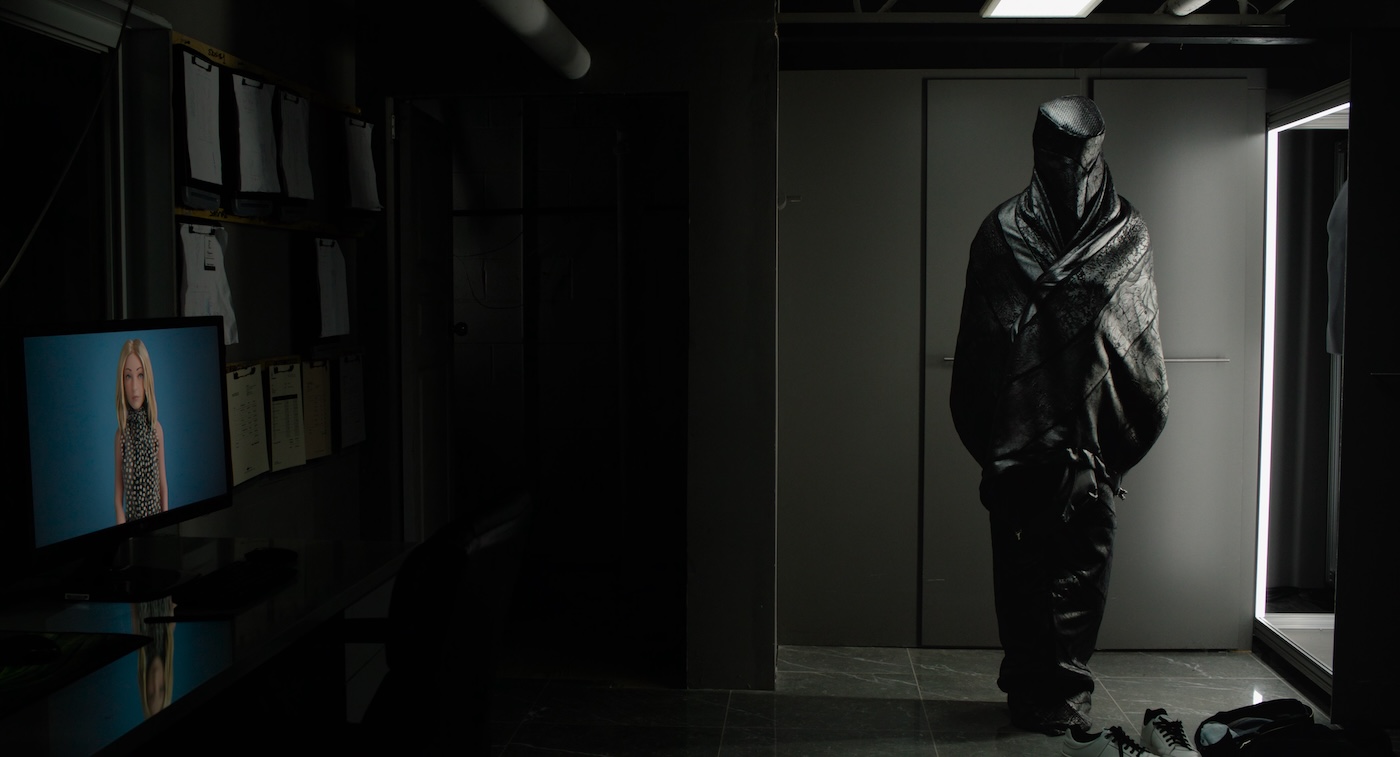In ‘The Shrouds,’ E-Textiles Capture The Intimacy Of Death
The movie’s burial shroud is a way to surveil the dead. In real life, artists are capturing intimate moments by weaving tech into textiles.
 What happens when a film production company run by a fashion brand tackles the devastating effects of grief? One answer is “The Shrouds,” a new movie from body-horror auteur David Cronenberg and Saint Laurent Productions, a film production offshoot of the French luxury fashion house.
What happens when a film production company run by a fashion brand tackles the devastating effects of grief? One answer is “The Shrouds,” a new movie from body-horror auteur David Cronenberg and Saint Laurent Productions, a film production offshoot of the French luxury fashion house.
In the movie, a widower business mogul invents a high-tech burial shroud that allows him to watch his wife’s body decay in the grave. He wrangles enough grieving buyers to fill a cemetery with these surveillance shrouds, but a mysterious act of vandalism sends him into a paranoid spiral about his late wife’s infidelity and his own fear of surveillance.

The movie adeptly touches on the ethical challenges that arise when wearable technologies record some of the most intimate details of our bodies and brains. While the premise might feel wildly futuristic, some artists are creating electronic textiles that explore these issues now.
For her project titled “Wear,” Dr. Laura Devendorf, an assistant professor of information science with the ATLAS Institute at the University of Colorado, Boulder, made a garment that could help her reflect on the feeling of being a mother to her two young daughters.
“I was trying to think about, how do you capture the fullness of the experience,” she says, “and my daughter, I think she was one or two at the time, was just so physical.”
Taking maternity clothes to a new level, Devendorf wove 22 felted pressure sensors and some conductive threads into the fabric of a dress. She then put on the dress and spent a day hugging, holding, and playing with her daughters. By evening, Devendorf could “play back” the day by transmitting data collected by the sensors to the conductive threads. Those threads raised the temperature in areas where the sensors had been touched, forming a moving heat map over the fabric that detailed how and where she was touched that day.

Her other projects use similar technologies to explore intimacy through textile. In 2019, Devendorf and her collaborators created “A Fabric That Remembers,” a small blanket that records how and when sensitive areas on its surface are touched. Later, they made the “Screaming Coat,” which incorporated a breath-sensing cord that could detect when the wearer inhaled and exhaled. During an exhale, the coat would play droning audio noises, like motor sounds, creating harmony with the sound of the wearer’s sighs or screams.
Fabrics “can mold to the body. You can design them very precisely to be stretchy in one spot, constricted in the other,” Devendorf says. “You end up seeing really interesting assemblies that could make them very good for sensing or for robotics.”
A handful of other artists are also probing how memories can be captured by interactive textiles. Olivia Valentine, an associate professor of art at Iowa State University, has collaborated with composer Paula Matthusen to create woven textiles and electronic music that influence each other in real time.
Lee Jones, a postdoctoral researcher of e-textiles at Queen’s University in Canada, uses fabrics as a means of visualizing data. In 2021, she created an automated knitting project that added a row of stitches onto a single scarf-like textile every time a patron entered an art gallery. Physicalizing data, Jones noted, allows the public to remember the data and interact with it in ways that go beyond visual observation.
Devendorf says that wearable technologies, including e-textiles, are often thought of as means for making life easier, either by optimizing it through data collection—using a wearable heart rate monitor to get the best workout, for example—or by surveilling it as in “The Shrouds.” But she sees fabric-based engineering materials as ways to capture, explore, and reflect upon intimate moments, rather than to modify or enhance them.
Memories, in particular, are “so embodied,” she says. “It means something very different when [technology is] on your body versus when it’s in your hand.”
If you liked “Crimes of the Future,” Cronenberg’s last film, you might like this movie, but I left the theater puzzled by the stiff acting and confusing web of unfinished plotlines. Viewers beware, you will catch a mangled body or two, both living and not, on full display.
“The Shrouds” is in theaters in New York and Los Angeles now, and will be available nationwide on April 25.
Emma Lee Gometz is Science Friday’s Digital Producer of Engagement. She’s a writer and illustrator who loves drawing primates and tending to her coping mechanisms like G-d to the garden of Eden.